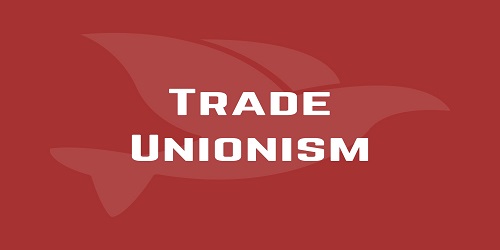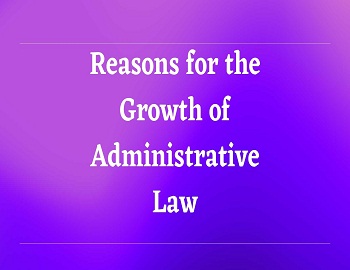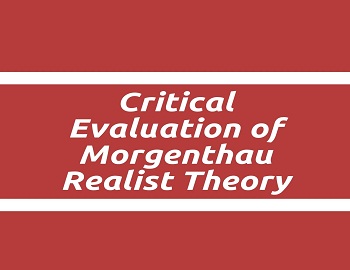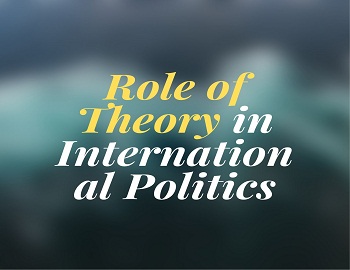Table of Contents
Trade Unionism:
In a democratic country, workers enjoy the right to combine themselves into an organization for promoting and protecting their interests. Says N. Barou, “The right of the workers to combine and act in combination in their own interests is one of the essential freedoms of modern civilization.” The organizations of workers are known as Trade Unions. Sharp differences in outlook and opinion between the working class and management groups give rise to trade unions.
Trade Union Definition:
Trade Unions have been defined differently by different writers and thinkers.
The Webbs defined a Trade Union as a “continuous association of wage earners for the purpose of maintaining and improving the conditions of their working lives.”
Cunnison defines it as “a monopolistic combination of wage earners who as individual producers are complementary to one another but who stand to the employers in a relation of dependence for the sale of their labor and even for its production; and that the general purpose of the association is in view of that dependence to strengthen their power to bargain with the employers.”
Shvernik describes a Trade Union as “an organization, the chief aim of which is the regulation of mutual relations between the workers and the employers.”
The Indian Trade Union Act defines it as “any combination…..formed primarily for the purpose of regulating the relations between workmen and employers…..”.
We may define a Trade Union as an organization of employers formed primarily for the purpose of the pursuit of the interests of its members.
Objects and Purposes of Trade Unions:
Trade Unions are formed to act as an instrument for meeting some of the economic, political, social, and psychological problems of large-scale industry, machine technology, and mass production. They are a means of achieving working-class desires and goals.
On the economic side, trade unions through collective bargaining help to improve workers’ wages and job security.
On the government side, they serve as an agency for industrial democracy, seeking to establish rights for workers to a voice in the determination of their “working conditions” and to afford them protection against arbitrary and unfair treatment on the job.
On psychological grounds, the worker, from membership in a labor organization, enjoys both a sense of power that helps to overcome feelings of inferiority and a sense of belonging to a group movement.
His self-respect and dignity are enhanced by winning objectives through his own organization.
Unions may also help to fulfill the needs of members on the social side. Through such activities as educational, health-and-welfare, and community-service programmes they may develop new patterns of working-class life outside the plant and enable workers to participate in community affairs.
On the basis of the above functions of Trade Unions, we may recount their objectives as follows:
(1) Better Wages- Trade Unions Act to secure better wages for their members in keeping with the prevailing standards of life and cost of living in the country.
(2) Bonus- They strive to obtain a part of the increased prosperity of industry for their members in the form of bonuses.
(3) Better Working Conditions- They work to attain better working conditions for the workers by procuring shorter working hours, leave with wages, social security benefits, and other welfare facilities.
(4) Enhancement of Self-respect and Dignity- They foster a sense of self-respect and dignity among the workers.
(5) Fulfilment of Social Needs- They help workers to fulfill their social needs through such activities as education, health and welfare, and group benefit schemes.
(6) Stable Employment- They strive for securing stable employment for workers by working against retrenchment of workers or rationalization plants.
(7) Foster Sense of Security- The Trade Union removes the sense of insecurity among the workers by granting a number of benefits such as sickness benefits, old age pensions, accident compensation, and unemployment allowances.
(8) Political Power- They enable workers to participate in legislative activities by sending their representatives to Parliament and State Legislatures.
Trade Union Movement in India:
Trade Union Movement is coextensive with large-scale industries. The Trade Union movement goes back to the year 1875 under the leadership of Sorabji Shapurji who agitated to draw the attention of the government to the appalling conditions in factories. This was followed by the establishment in 1890 of the Bombay Mill-hands’ Association through the efforts of N. M. Lokhande, himself a workman. In 1897 the Amalgamated Society of Railway Servants of India was formed, followed in 1903 by the Printers’ Union, Calcutta and the Bombay Postal Union (1907), the Kamgar Hitwardhak Sabha (1909), and the Social Service League in 1910. These associations were more of the nature of social service organizations than proper trade unions.
The First World War, the Russian Revolution, the Swaraj Movement, and the establishment of the International Labor Organization gave a new life to the Trade Union Movement in India. In the inter-war period a number of Trade Unions came into existence, the All-India Trade Union Congress, being the most important of all, having a membership of 10,000 workers. In 1942, the Indian Federation of Labor was established, but it did not last long. In 1947, the Indian National Trade Union Congress was formed as a labor wing of the Indian National Congress. In 1948, the Hind Mazdoor Sabha was established which is led by the Praja Socialist Party and the Samyukta Socialist Party.
The Trade Union Movement in India is closely linked with the growth of political parties. The recent additions to the ALL India Trade Unions are the United Trade Union Congress and the Bhartiya Mazdoor Sangh, which is an affiliate of Bhartiya Jan Sangh.
- All-India Trade Union Congress (AITUC). This union was formed in 1920 mainly on the pattern of the British Trade Unions. It is today dominated by the Communist Party and Radicals.
- Indian National Trade Union Congress (INTUC). This union came into existence in May 1947 as an adjunct to the Congress Party. The aims of the union are to adopt peaceful means for the settlement of labor disputes. Negotiation is the method. Only if that fails arbitration is to be restored. Strikes must not be declared until all other methods of settlement of disputes have been exhausted. The Government of India declared this union in 1948 as the most representative union in the country.
- Hind Mazdoor Sabha (HMS). This union was formed by those Socialists in the Congress Party who parted company with it. The Praja Socialist Party and the Samyukta Socialist Party dominate this union. The HMS aims at keeping the Trade Union movement from domination by employers, the Government, and other political parties.
- United Union Congress. This union is more radical than the HMS but much less revolutionary in its objectives than the AITUC.
- Bhartiya Mazdoor Sangh (BMS). The union has been formed as an affiliate of the Bhartiya Jan Sangh Party.
Weakness of Trade Union Movement:
The Trade Union Movement in India has not reached its state of maturity. It does not compare favorably with giant unions of the U.K. and the U.S.A. Some of the weaknesses of the movement in India are as follows:
(1) Domination of Political Parties- The Trade Unions in India are dominated by political parties and leaders. The political aims overshadow the genuine objectives of the trade unions. In fact, the greatest obstacle to the growth of a healthy trade union movement in India is the unhealthy influences of rival political parties.
(2) Absence of Unity- There are too many rival unions. This militates against cohesive and united action on the part of all the workers.
(3) Inadequacy of Finances- The finances of almost all the unions are very poor. Only the Indian National Trade Union Congress can claim a good financial position. The paucity of funds stands in the way of the unions doing much for the welfare of the workers.
(4) Small Number of Members- The trade unions do not command good membership. On top of this, the meagre membership is spread over a very large number of unions thereby weakening the position of individual unions.
(5) Lack of Common Goal- For the success of any organized group the individual members of the group must have commonness of mind. There is an absence of commonness of mind because of the domination of political parties with different ways of achieving ends, so the goals also differ.
(6) Absence of Craft Unions- We have no craft unions in our country, all workers being unionized unit-wise or industry-wise. The workers following different crafts becoming members of the same union often create problems rather than meeting them.
The weak position of the Trade Unions in the country stands in the way of the healthy growth of the device of collective bargaining for the achievement of workers’ aims. It is one of the principal reasons that adjudication rather than negotiation has to be applied for the settlement of industrial disputes. It is incumbent on the part of all concerned with the welfare of the workers to make the trade unions strong and effective for the purposes for which they are formed. A strong union is good both for the workers and the management, as well as for the community.









Comments (No)